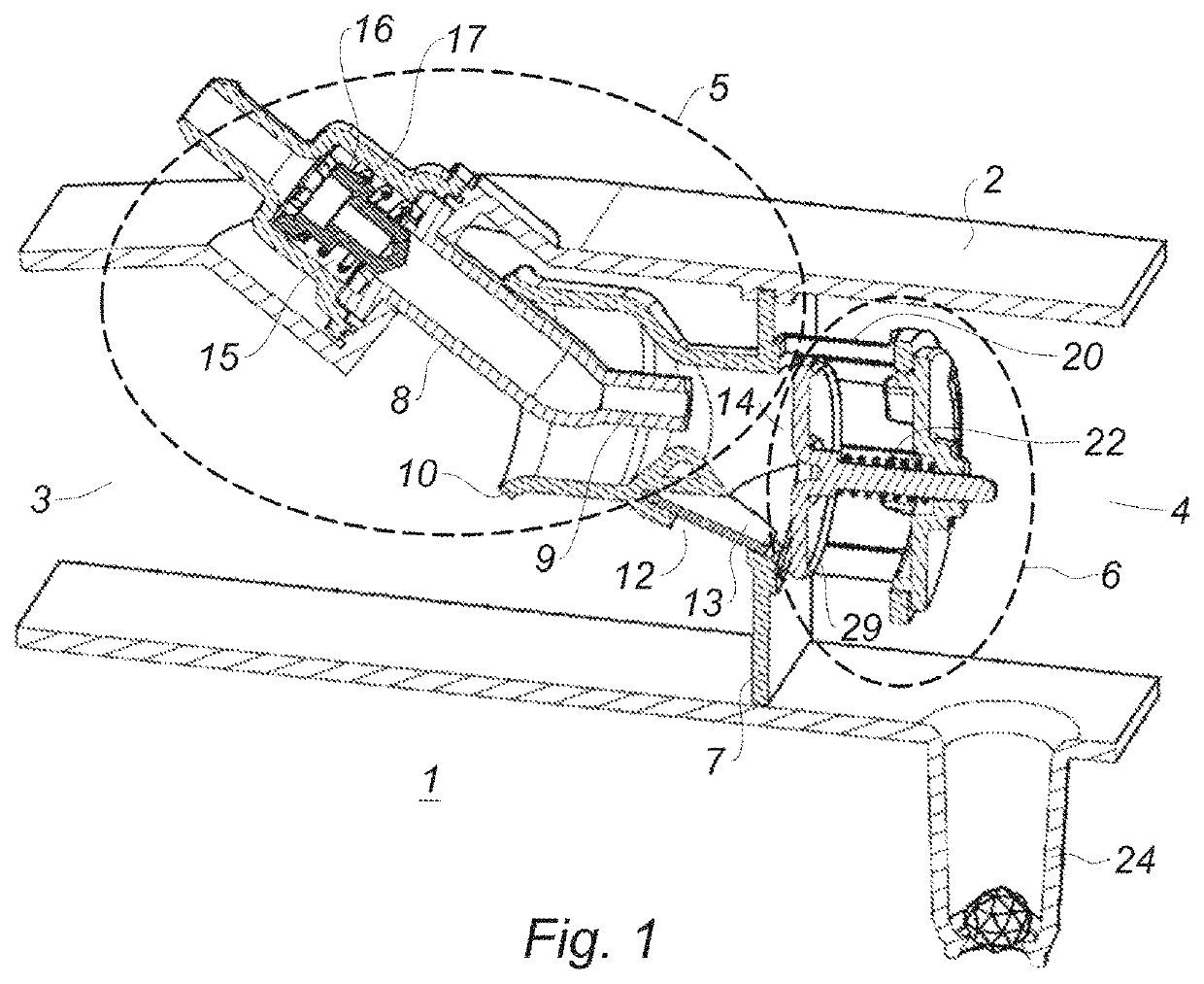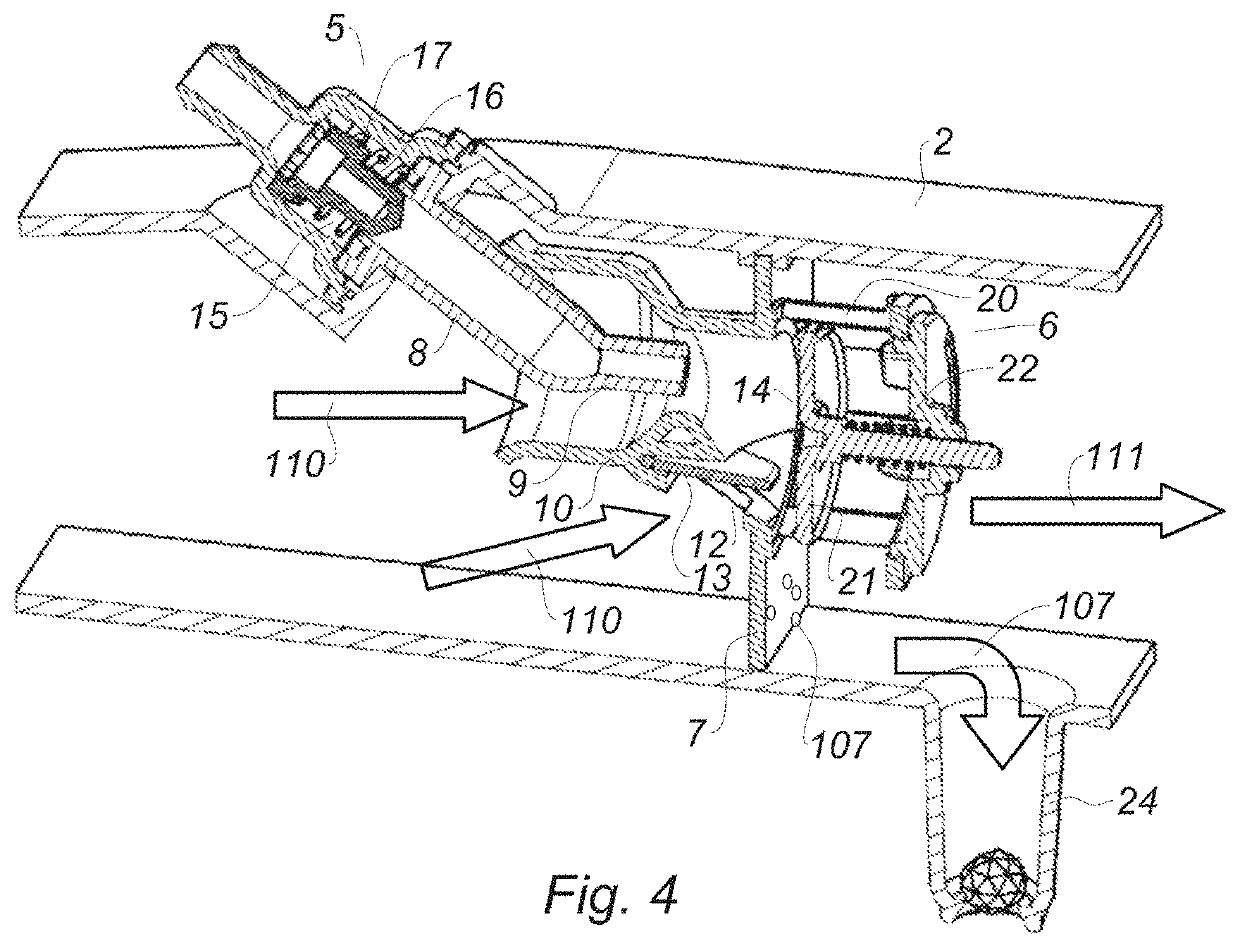Oil decantation system for an internal combustion engine
- Summary
- Abstract
- Description
- Claims
- Application Information
AI Technical Summary
Benefits of technology
Problems solved by technology
Method used
Image
Examples
Embodiment Construction
[0033]Schematically, an internal combustion engine 100 as represented in FIG. 10 comprises in particular a cylinder 101 within which a piston 102 moves, a crankcase 103 within which oil 106 splashes, and a suction duct 104. During the operation of the engine, burnt gases 105 infiltrate into the oil pan 103 passing between the cylinder 101 and the piston 102 throughout the piston's rings. Their evacuation causes a gas flow called blow-by gas 110 loaded with oil droplets collected during splashing in the oil 106.
[0034]The engine 100 is equipped with an oil separator device 1 according to the invention.
[0035]The blow-by gases 110 are routed at the inlet of the oil separator device 1 according to the invention, the latter allowing freeing the flow of the blow-by gas 110 from the oil droplets contained therein. The captured oil droplets 107 are collected and routed towards the oil pan 103 for recycling. The gaseous flow 111 freed from the oil droplets is evacuated into the air suction du...
PUM
| Property | Measurement | Unit |
|---|---|---|
| Flow rate | aaaaa | aaaaa |
| Area | aaaaa | aaaaa |
| Gravity | aaaaa | aaaaa |
Abstract
Description
Claims
Application Information
 Login to View More
Login to View More - R&D
- Intellectual Property
- Life Sciences
- Materials
- Tech Scout
- Unparalleled Data Quality
- Higher Quality Content
- 60% Fewer Hallucinations
Browse by: Latest US Patents, China's latest patents, Technical Efficacy Thesaurus, Application Domain, Technology Topic, Popular Technical Reports.
© 2025 PatSnap. All rights reserved.Legal|Privacy policy|Modern Slavery Act Transparency Statement|Sitemap|About US| Contact US: help@patsnap.com



